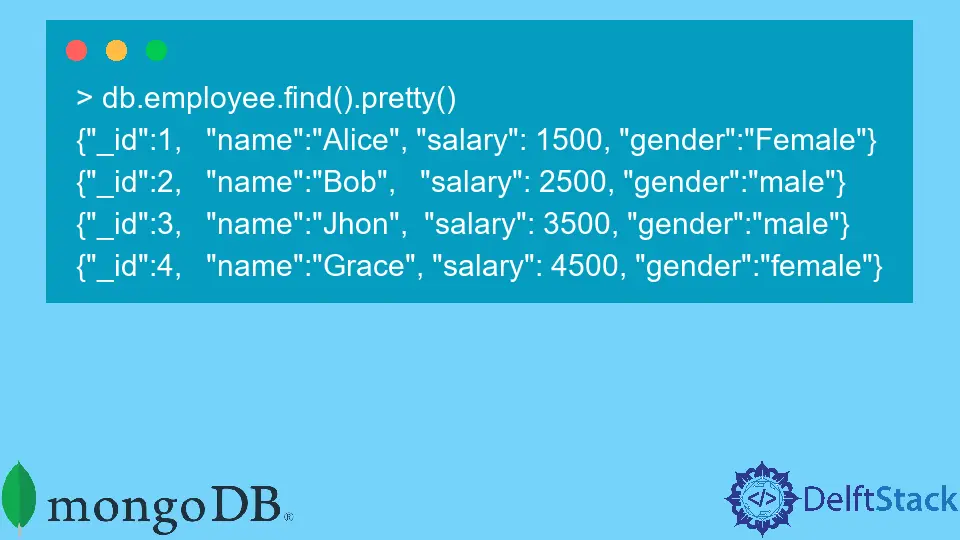The $ne Operator in MongoDB
- What is the $ne Operator?
- Using $ne with the find Method
- Using $ne with the update Method
- Conclusion
- FAQ

In the realm of databases, MongoDB stands out for its flexibility and powerful querying capabilities. One of the essential tools in your MongoDB toolkit is the $ne operator, which stands for “not equal.” This operator allows you to filter documents based on conditions that exclude certain values, making it an invaluable asset when querying your database. Whether you’re working on a complex data retrieval task or simply need to update records, understanding how to use the $ne operator effectively can enhance your MongoDB experience.
In this article, we will delve into the $ne operator, explore its applications in find and update methods, and provide clear examples to help you grasp its functionality.
What is the $ne Operator?
The $ne operator is a comparison operator that allows you to check if a field does not equal a specified value. It can be used in various scenarios, especially when you want to filter out documents that match a certain criterion. For instance, if you’re looking for all users who are not located in a specific city, the $ne operator can efficiently help you achieve that.
When using the $ne operator, it’s crucial to remember that it can be combined with other query operators to create more complex queries. This flexibility makes it a powerful tool for developers and data analysts alike.
Using $ne with the find Method
One of the most common applications of the $ne operator is within the find method. When querying a MongoDB collection, you might want to retrieve documents that do not match a particular value. Here’s how you can do that:
from pymongo import MongoClient
client = MongoClient('mongodb://localhost:27017/')
db = client['mydatabase']
collection = db['mycollection']
result = collection.find({"city": {"$ne": "New York"}})
for document in result:
print(document)
Output:
{ "_id": 1, "name": "Alice", "city": "Los Angeles" }
{ "_id": 2, "name": "Bob", "city": "Chicago" }
{ "_id": 3, "name": "Charlie", "city": "San Francisco" }
In this example, we first establish a connection to the MongoDB database. We then specify the database and collection we want to work with. The find method is used to retrieve documents where the city is not equal to “New York.” The result is a list of documents that meet this criterion, which we print out.
This approach is particularly useful when you want to analyze data excluding specific entries, allowing for a more tailored dataset for your analysis or application.
Using $ne with the update Method
The $ne operator is not just limited to querying data; it can also be used in update operations. This allows you to modify documents based on conditions that exclude certain values. Here’s how you can implement this:
from pymongo import MongoClient
client = MongoClient('mongodb://localhost:27017/')
db = client['mydatabase']
collection = db['mycollection']
update_result = collection.update_many(
{"city": {"$ne": "New York"}},
{"$set": {"status": "inactive"}}
)
print(f'Modified documents count: {update_result.modified_count}')
Output:
Modified documents count: 2
In this example, we connect to the MongoDB database and specify the collection we want to update. The update_many method is utilized to change the status of all documents where the city is not equal to “New York” to “inactive.” The modified_count attribute provides feedback on how many documents were updated, which is printed out.
Using the $ne operator in update operations is particularly useful for bulk updates, ensuring that only the desired records are altered while maintaining the integrity of other data.
Conclusion
The $ne operator in MongoDB is a powerful tool that allows you to filter and manipulate data efficiently. By understanding how to use this operator effectively in both find and update methods, you can enhance your data querying and modification capabilities. Whether you’re excluding specific values in your queries or updating records based on certain conditions, the $ne operator will prove to be a valuable asset in your MongoDB toolkit. Embrace the power of the $ne operator to streamline your database interactions and improve your overall data management strategy.
FAQ
-
what does the $ne operator do in MongoDB?
The $ne operator checks if a field does not equal a specified value, allowing for more flexible data queries. -
can I use the $ne operator with other operators?
Yes, the $ne operator can be combined with other query operators to create complex queries. -
how does the $ne operator work with the find method?
When used with the find method, the $ne operator retrieves documents that do not match a specified value.
-
can I use the $ne operator in update operations?
Yes, the $ne operator can be used in update operations to modify documents that do not meet a certain criterion. -
what is the difference between $ne and $eq?
While $ne checks for values that are not equal, $eq checks for values that are equal to a specified value.
